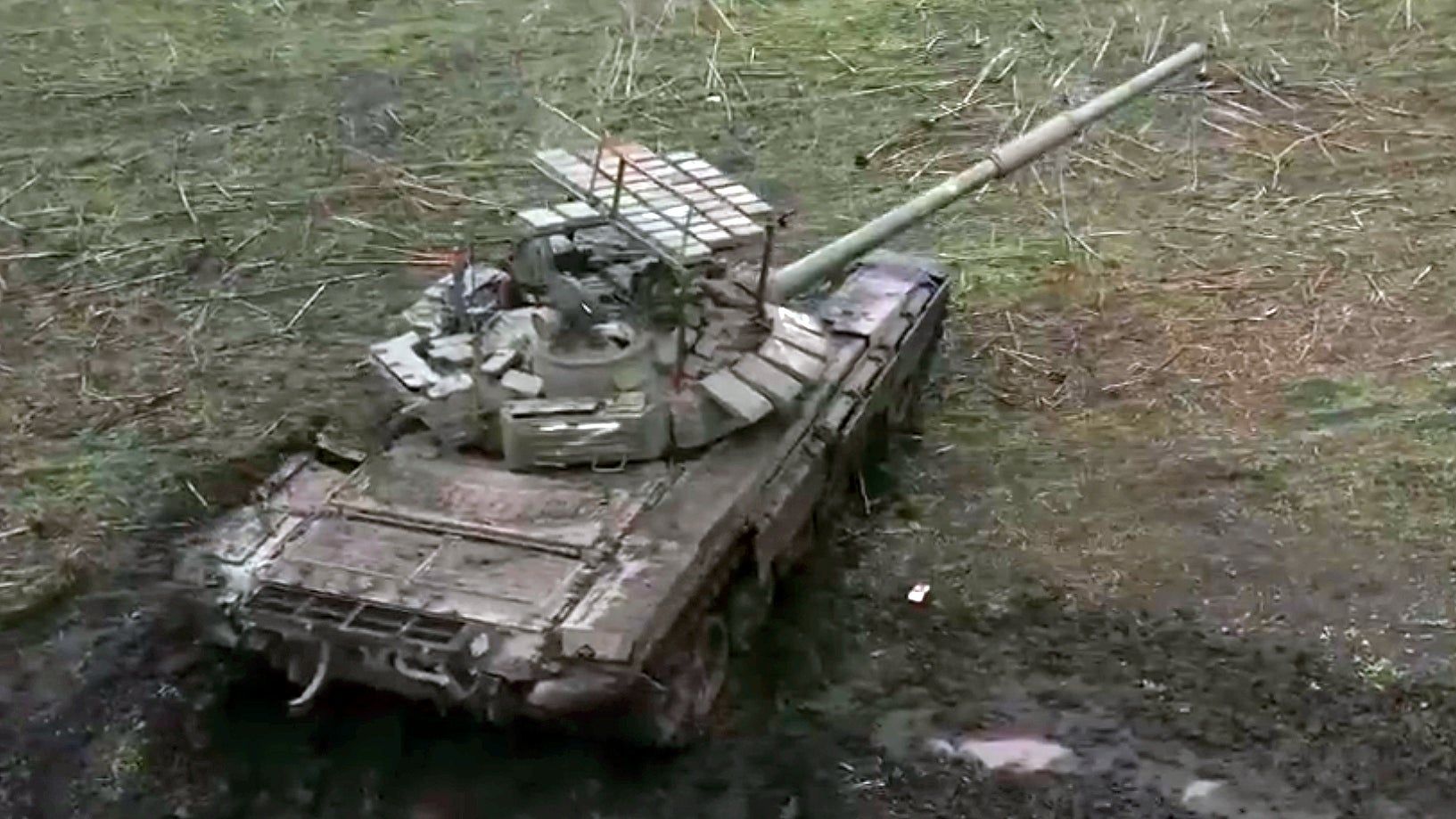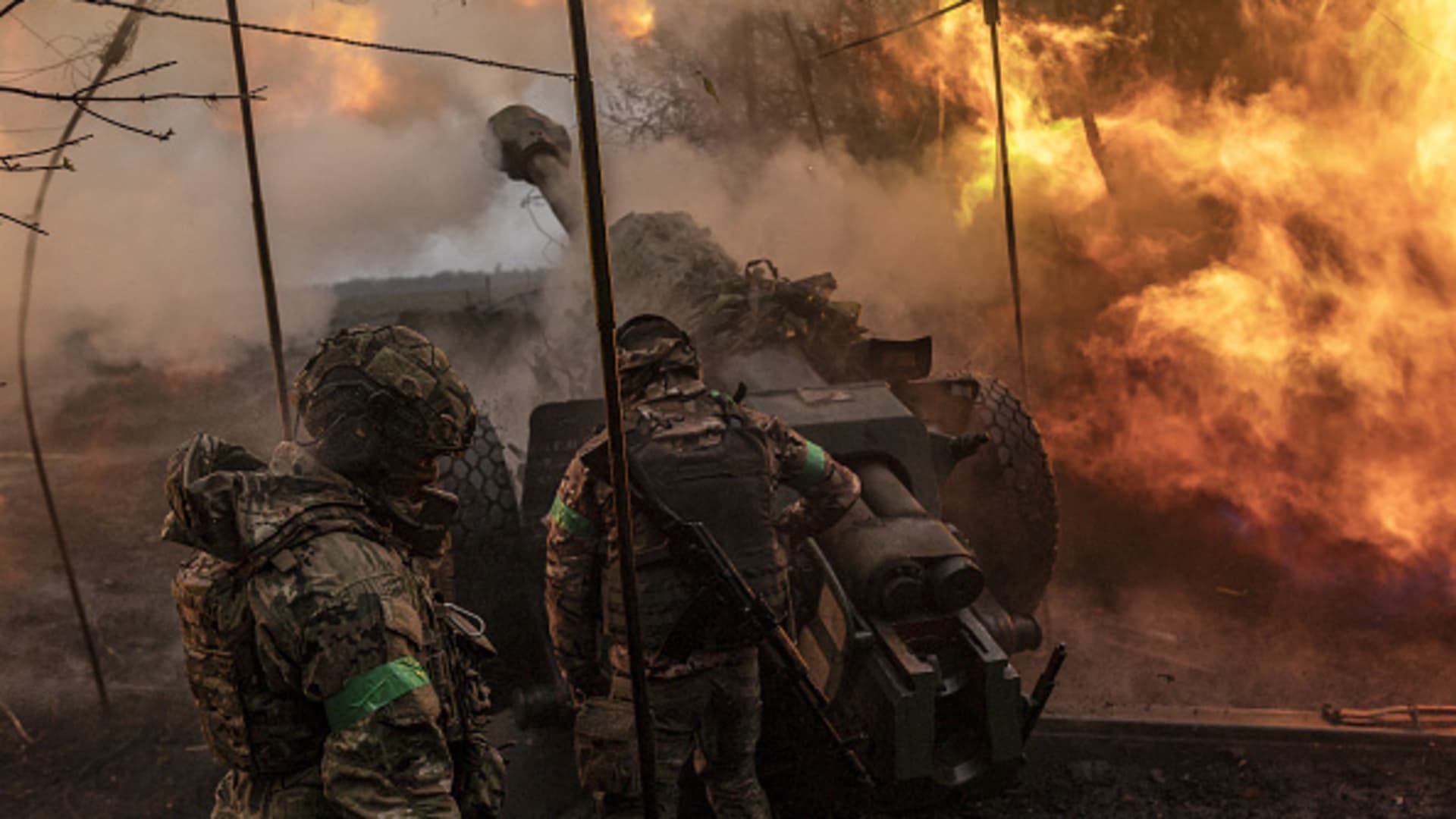Russian Tank With ‘Cope Cage’ Covered In Explosive Reactive Armor Emerges
Video shows a Russian T-72B3 tank from its Western Military District thundering through the mud with an overhead metal screen, widely termed “cope cage” by Ukrainian troops, with an added layer of what appear to be Kontakt-1 explosive reactive armor (ERA) bricks on top.
The full video from the Russian Ministry of Defense showed the tank providing drone-corrected indirect fire using its 125mm cannon at high elevation. It nearly takes out the drone filming its attack with overpressure from the gun.
(Russian MOD Screencap)
Cope cages began appearing on Russian armored vehicles in late 2021 amid the pre-war buildup as a counter to loitering munitions and drones, particularly the Turkish-made TB-2 used in the 2020 Nagorno-Karabakh War and later by Ukraine against Russian forces. It seemed there was also hope, albeit misguided, that they could defeat anti-armor guided missiles capable of top-attacks, as well.
Very generally speaking, ERA works to defend against attacks by armor penetrating weapons, such as high-explosive, armor piercing (HEAT) rounds and armor piercing sabot rounds by detonating (creating a counter-blast) on impact prior to the weapon penetrating the tank's turret or hull. This disrupts the weapon's effects or destroys it outright, saving the tank's crew and possibly the tank itself. In some applications, when fastened at a steep angle, they can also work to deflect the weapon's effects.
Russia's new ERA laden cope cage from the top. (Russian MOD screencap)
It’s unclear if the Kontakt-1 bricks could make the cope cage more viable. While such a screen might better protect against light top-attacks from drone-dropped mortars or FPV kamikaze drones, those systems only posed serious threats to tanks with open hatches. Also they appear to be placed flat, meaning they lose the ability to help deflect weapon's angle.
Whether they could help counter top-attack capable anti-tank missiles is another question entirely. Also, if someone was standing in the hatch below them when they detonated, what damage would be inflicted on them, if any, is another question.
The evolution and proliferation of these screens has been somewhat fascinating to watch over the last year and a half. Clearly, work is still ongoing into making them serve an intended purpose, at least in a more robust manner.
Source: The War Zone


